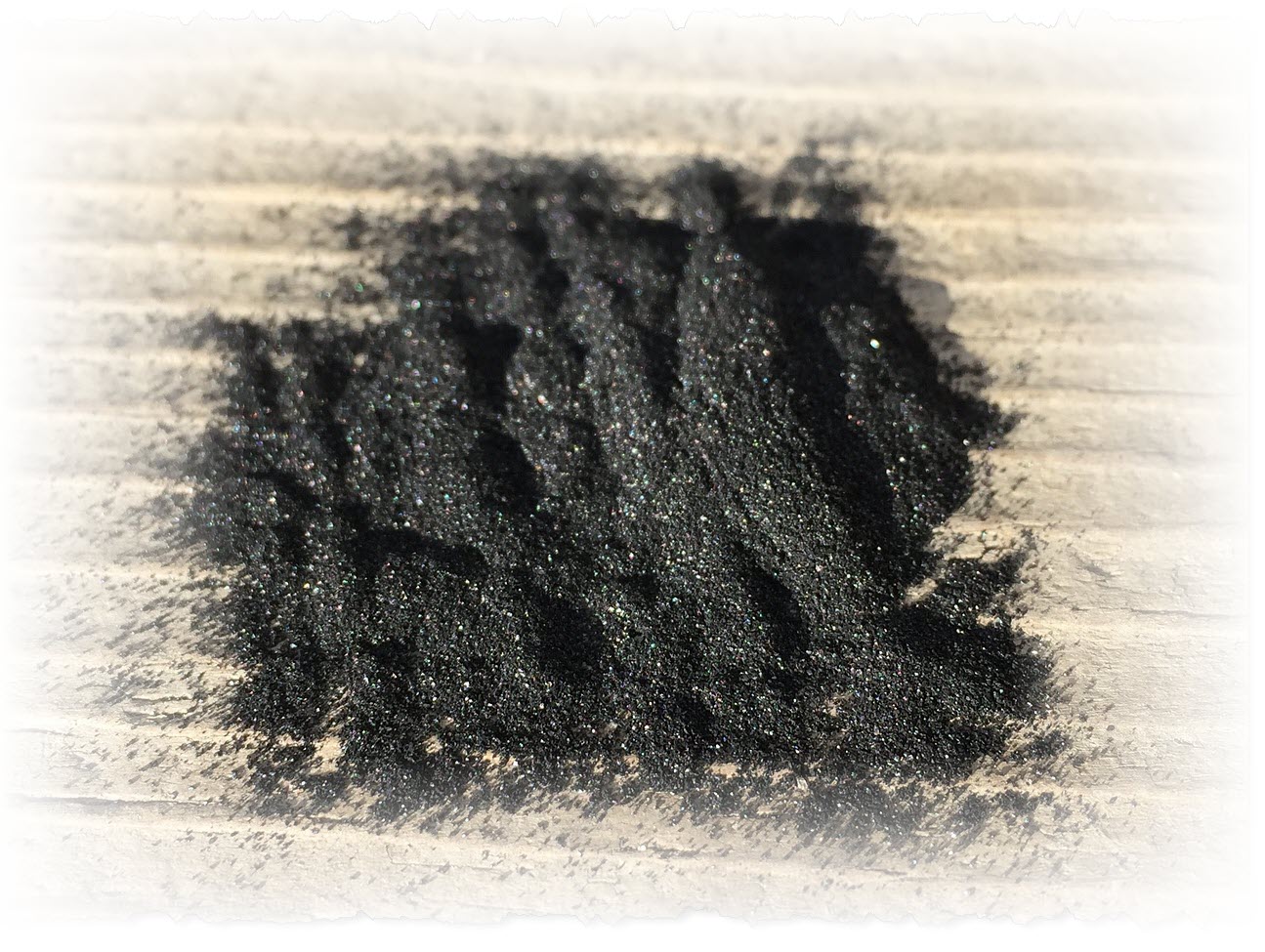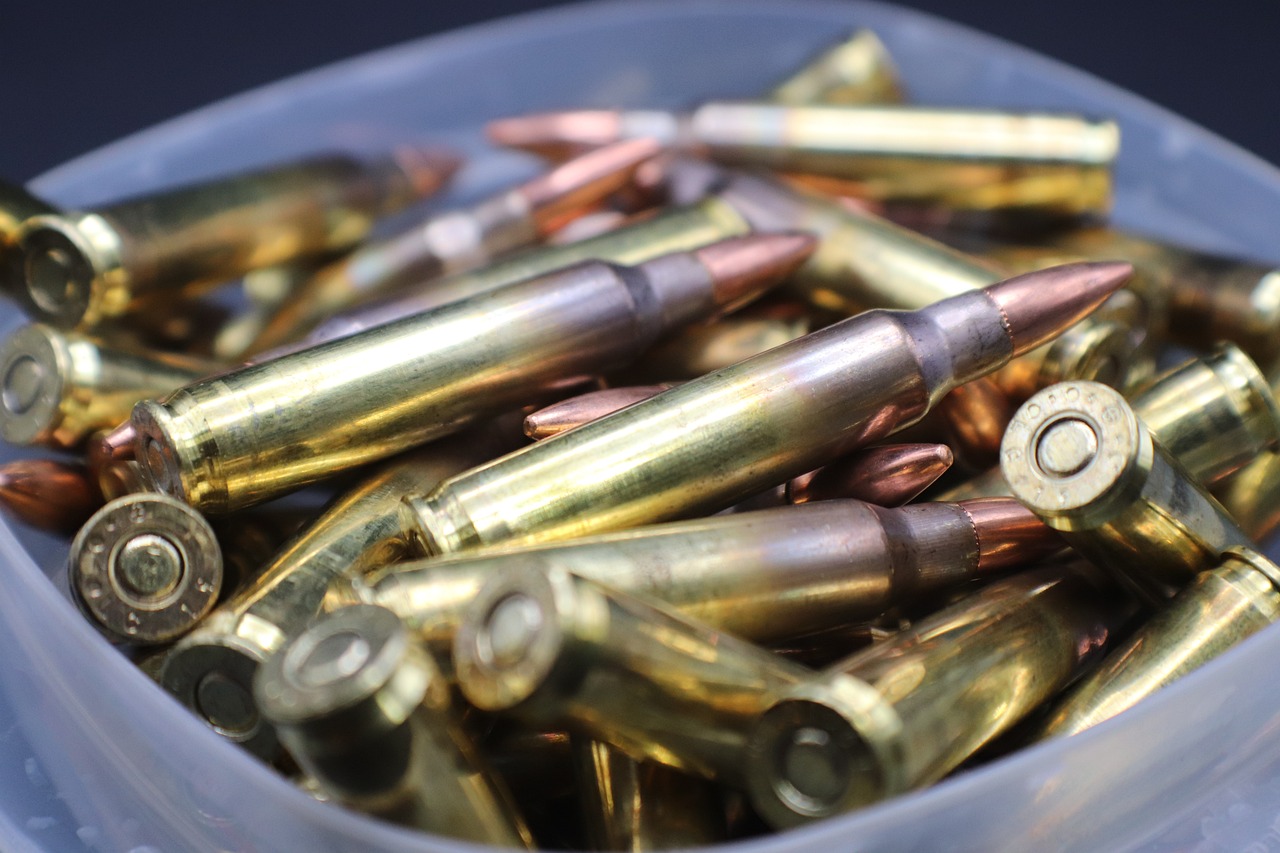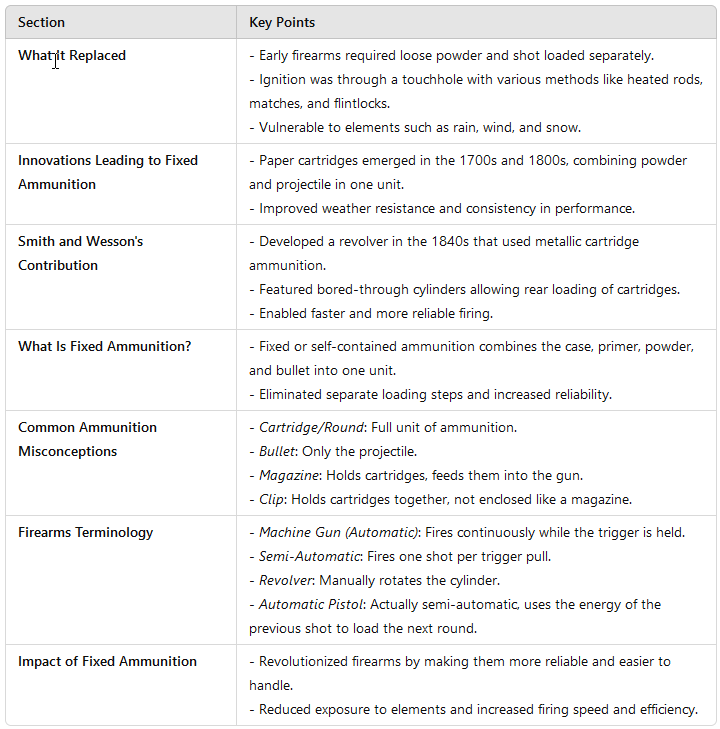A Game-Changing Innovation
The Evolution of Firearms Ammunition: What Did Fixed Ammo Replace?
In the 1400s, firearms—whether they were small arms or cannons—were cumbersome and unreliable. These early guns required users to manually load loose gunpowder and shot, a process that involved pouring the powder into the muzzle of the gun barrel and then compacting or dropping the shot on top of it. The gun barrels of that time resembled bells, with an open muzzle at the front and a sealed breech at the rear, much like a vase.
To fire the weapon, users ignited the powder at the breech using a small ignition hole, often called a touchhole. Various ignition methods were employed, from heated iron rods to slow-burning ropes known as matches. Later, flintlock mechanisms sparked the powder with a flint striking against metal, igniting gunpowder in a pan known as a frizzen pan.
But this system had a significant flaw: exposure to the elements. Loose powder, burning ropes, and gunpowder in the frizzen pan were all vulnerable to rain, wind, and snow—often causing misfires. A weapon that couldn’t fire when needed was virtually useless in battle or hunting.
Innovations Leading to Fixed Ammunition
During the 1700s and early 1800s, significant innovations aimed at overcoming these weaknesses began to take shape. One notable breakthrough was the paper cartridge, which bundled the gunpowder and projectile in a durable paper or animal intestine wrapper. These cartridges were sturdier and more reliable in adverse weather, providing consistent performance and easier handling.
Enter Smith and Wesson: Revolutionizing Firearms with Metallic Cartridges
By the 1840s, the race to create a reliable, weatherproof, and safe ignition system for firearms hit a high point. Enter Smith and Wesson, two American inventors who combined several emerging technologies to create one of the first reliable revolvers that utilized metallic cartridge ammunition—a true game-changer.
Smith and Wesson’s revolver featured a cylinder that rotated with each pull of the hammer. But what set it apart was the bored-through cylinders that allowed metallic cartridges to be loaded from the rear. This was revolutionary because it enabled the use of fixed ammunition—a self-contained unit combining powder, primer, and projectile—loaded from the back of the cylinder, dramatically improving the firearm’s speed and reliability.
What Is Fixed Ammunition?
Fixed or self-contained ammunition combines four main components in one unit: the case, primer, powder, and bullet. This design eliminates the need for separate loading of loose powder  and shot, solving many of the issues that plagued earlier firearms.
and shot, solving many of the issues that plagued earlier firearms.
Now, let’s clear up a few common misconceptions for those new to the world of ammunition.
Common Ammunition Terminology Misconceptions
When learning about firearms and ammo, people often mix up terms, and it doesn’t help that even seasoned shooters sometimes use incorrect terminology for convenience.
- Cartridge or Round: A fully assembled piece of fixed ammunition is called a cartridge or a round.
- Bullet: This is the projectile that is fired from the gun. It’s just one part of the entire cartridge. Saying your gun holds “six bullets” is incorrect; it holds six cartridges.
- Magazine vs. Clip: A magazine holds cartridges in place, feeding them into the gun for firing. Many guns today, especially autoloaders, use magazines. A clip, on the other hand, is an old-fashioned device that holds cartridges together, but unlike magazines, it doesn’t fully enclose them. Some rifles, like the M1 Garand, use a special kind of clip called a bloc.

Why Fixed Ammunition Changed Everything
The development of fixed or self-contained ammunition represented a monumental leap forward in the evolution of firearms. It streamlined the process, reduced misfires due to weather, and made firearms more reliable and efficient. With metallic cartridges, shooters no longer had to juggle multiple components and risk exposure to the elements—a crucial factor in both hunting and combat.
As you delve deeper into the mechanics of firearms and ammunition, you’ll gain a clearer understanding of why fixed ammunition is one of the most important advancements in the history of firearms. Stay tuned for more insights into this transformative technology.



